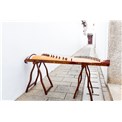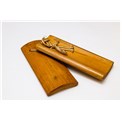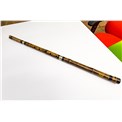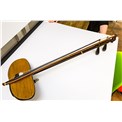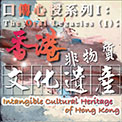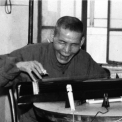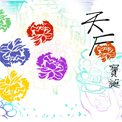-
History & Society
- Education in Pre-war Hong Kong
- History of Taikoo Sugar Refinery
- Hong Kong Products Exhibition
- Local Festivals Around the Year
- Post-war Industries
- Pre-war Industry
- The Hong Kong Jockey Club Archives
- Tin Hau Festival
- Memories We Share: Hong Kong in the 1960s and 1970s
- History in Miniature: The 150th Anniversary of Stamp Issuance in Hong Kong
- A Partnership with the People: KAAA and Post-war Agricultural Hong Kong
- The Oral Legacies (I) - Intangible Cultural Heritage of Hong Kong
- Hong Kong Currency
- Hong Kong, Benevolent City: Tung Wah and the Growth of Chinese Communities
- The Oral Legacies Series II: the Representative List of the Intangible Cultural Heritage of Hong Kong
- Braving the Storm: Hong Kong under Japanese Occupation
- A Century of Fashion: Hong Kong Cheongsam Story
Geography & EnvironmentArt & Culture- Calendar Posters of Kwan Wai-nung
- Festival of Hong Kong
- Ho Sau: Poetic Photography of Daily Life
- Hong Kong Cemetery
- Sketches by Kong Kai-ming
- The Culture of Bamboo Scaffolding
- The Legend of Silk and Wood: A Hong Kong Qin Story
- Journeys of Leung Ping Kwan
- From Soya Bean Milk To Pu'er Tea
- Applauding Hong Kong Pop Legend: Roman Tam
- 他 FASHION 傳奇 EDDIE LAU 她 IMAGE 百變 劉培基
- A Eulogy of Hong Kong Landscape in Painting: The Art of Huang Bore
- Imprint of the Heart: Artistic Journey of Huang Xinbo
- Porcelain and Painting
- A Voice for the Ages, a Master of his Art – A Tribute to Lam Kar Sing
- Memories of Renowned Lyricist: Richard Lam Chun Keung's Manuscripts
- Seal Carving in Lingnan
- Literary Giant - Jin Yong and Louis Cha
Communication & Media- Hong Kong Historical Postcards
- Shaw Brothers’ Movies
- Transcending Space and Time – Early Cinematic Experience of Hong Kong
- Remembrance of the Avant-Garde: Archival Camera Collection
- Down Memory Lane: Movie Theatres of the Olden Days
- 90 Years of Public Service Broadcasting in Hong Kong
- Multifarious Arrays of Weaponry in Hong Kong Cinema
-
History & SocietyGeography & EnvironmentArt & Culture
-
View Oral History RecordsFeatured StoriesAbout Hong Kong Voices
-
Hong Kong MemoryThe Oral Legacies Series II: The Representative List of the Intangible Cultural Heritage of Hong KongRecently Visited
The Unique Features of Nanyin
The nanyin style sung by the blind artists is called “dishui nanyin”, “dishui” being associated with fortune-telling, a profession largely accorded to the blind in the old days in China. The singing was originally secondary to the fortune-telling, as it was just a way to attract hire, but soon the terms were bundled together to become a singing style, and it has been adopted to this day.
The lyrics of nanyin sung by blind artists can be delivered in the spoken form close to the local dialect, and are seldom refined. Spoken lines are inserted between the sung passages impromptu. The singer can play multiple roles in the narrative. The duration differs, from a dozen or so minutes to half an hour for short pieces, to hours and even months for the long, serialised stories. Nanyin was incorporated into Cantonese Opera and Cantonese operatic songs at the beginning of the 20th century to become sung arias, this type of nanyin was shorter, and was delivered with variations in musical shifts and with no spoken lines for narration. The traditional “dishui nanyin” was almost extinct by the late 1970s. But composers today are still actively inserting nanyin sung passages in Cantonese opera and Cantonese operatic songs.
In terms of repertory, the nanyin genre is mostly about folk tales, romantic love stories of young scholars meeting beautiful ladies, and legendary figures in history. The narration is in a mixture of spoken lines and singing. The male blind artists (gushi) would use the zheng and the yehu for accompaniment, plus the clappers to keep the percussive points, while the female blind artists (shiniang) would use the yangqin and the qinqin. More recent practices would include the dongxiao and the pipa as accompanying instruments. The most well-known pieces are A Wanderer’s Autumn Grief, Burning Funerary Goods for His Love, Baoyu Paying His Last Respects to Daiyu, An Outcry in Governor Mei’s Office, King Chu Bidding Farewell to His Concubine, A Ghostly Tale etc. In a performance, before they start to sing, the blind artists would say a few auspicious words to wish the listeners luck. A professional like Dou Wun could beat time with his left hand on the clappers and play the zheng with his right while singing and playing the instrument at the same time. Sometimes they would have accompanists for their singing.
Traditional “dishui nanyin” songs tend to be long. Structurally, a piece must consist of three musical passages – the prelude, the song lyrics, and the interludes; as for the lyrics, they must also be in three segments – the introduction, the story proper, and the ending. They are repeated to form several sections. The lyrics are mostly in phrases of seven characters and rhymed. There would also be padding syllables inserted here and there, between the original phrases and patterns, before or in the middle of a full sentence etc., just for emphatic effect or for mood. The singer may alternately use the “zhengxian” and “yifan” modes for expressing different moods. The latter conveys sorrow, and so that kind of singing is also known as “kuhou nanyin”, meaning “southern tunes imbued with bitterness and sadness”. The accompanist is often very flexible in keeping up with the singing by adding interludes or phrases of an imitative melodic passage right after the singer has sung them a cappella. The highly improvisatory manner of singing by the artist, whether in modal shifts, rhythm, interlude and lengthened delivery of a note reveals his or her imaginative handling of the vocal performance.
Copyright © 2012 Hong Kong Memory. All rights reserved.






